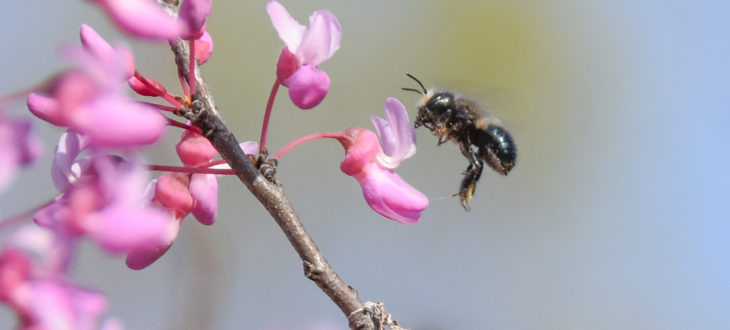
There are wonderful Oklahoma native trees that serve an abundance of pollinators! We chatted with Kevin Mink, urban soil health specialist from the Oklahoma County Conservation District and here is what he recommends:
“One of my favorite trees is Cercis Canadensis, the Redbud: Aside from being the state tree of Oklahoma, this gorgeous early Spring bloomer provides early season forage for our pollinators and serves as the primary nesting material source for leafcutter bees,” says Mink. He also notes that it is a small versatile tree with edible flowers and newly emerged seed pods. “I consider it the true sign of Spring when they come into bloom. When these guys are in full bloom you can often hear them buzzing with life.”
Another tree Mink is partial to is Celtis spp, the Hackberry. “This tree may get a bad reputation because if you've ever parked underneath one you know what a mess they can be. However this genus has been known to host up to 43 different caterpillar species making it an awesome tree to have around,” says Mink. He recommends that if you have only space for ONE tree, it probably should be this one. In addition to being a great host plant, it also provides terrific wildlife forage. “Birds especially eat from this tree on its dark blue, almost black, drupes. And, I think it has a super cool bark structure!”
When thinking about WHEN to plant your next tree, Okies for Monarchs suggests you consult with your county extension office or a locally-owned and operated tree nursery to ensure you set up your new vertical wildlife host for optimal success. Tips from OSU can be found online here.
Ready to Build a Garden?
Learn more about how to build a pollinator garden including when/where to plant, what size it should be and how to maintain it.

